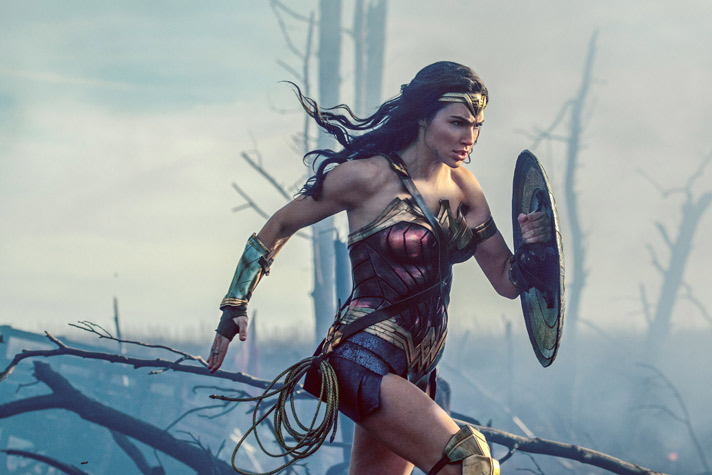The Unfettered Critic – July 2017
Comic books once were considered kid stuff. No one over sixteen admitted to reading them, let alone dared to dream of watching his or her favorite superheroes on the big screen. A theatrical serial starring Kirk Alyn as Superman arrived in the 1940s, but it was sequestered in kids’ matinees. The Fifties television series Adventures of Superman, starring George Reeves, also aimed at a younger audience, as did the Batman television series a decade later, with its corny dialogue and comics-influenced graphics during fight scenes (Bam! Pow!).
But everything changed in 1978 when Superman: The Movie debuted. Featuring a charismatic performance by Christopher Reeve, the film’s ad-copy line read: “You will believe a man can fly!” Hollywood executives, noting the film’s $300 million gross, interpreted it as, “You will believe a superhero movie can make a ton of money!”
Over the next decade, three Superman sequels were produced, although none of them lived up to the original’s promise of profits. Hoping to tantalize female fans, Hollywood offered up Supergirl in 1984, but the poorly plotted film didn’t please anyone. This was Strike One against female superheroes. Five years later, another male arrived on the scene. Tim Burton’s Batman blew everyone’s socks off, and inspired numerous sequels, including one that featured Batman’s nemesis, Catwoman. The feline femme fatale got her own movie in 2004—and was universally panned. Strike Two against female superheroes.
Since, comic book-based movies have grown increasingly dark in tone, reflecting the evolving nature of the literary genre on which they’re based. Browse through a bin at your neighborhood comic book store today and you’re more likely to see gritty “graphic novels” than the kid-friendly periodicals of old. Even Superman has grown dark.
The mandate of all superheroes, cinematic or pulp, is to defend Earth against domestic and/or intergalactic villains. But thanks to advances in the computer graphics technology revered by filmmakers, onscreen battles now cause extensive collateral damage, leaving in their wake trashed skyscrapers, leveled cities, and uncountable civilian casualties.
Although critically lauded, Marvel Comics (which spawned X-Men, Spider-Man, Iron Man, Captain America, etc.) is as guilty of onscreen overkill as DC Comics (home to Batman, Superman, Green Lantern, and more). Of late, we’ve grown bored by superhero movies; we’ve wondered, is any superhero worth rooting for?
Well, good news! We’ve found her!
Yes, we said “her.”
Wonder Woman is a genuine superhero movie, jam-packed with action, fun, pyrotechnics, and even a bit of romance. It’s also a thoughtful, philosophical tale. The central character—a breakout performance by actress Gal Gadot—is, quite literally, a godsend. She’s as physically stunning as a superhero should be, and as engagingly personable as Chris Reeve’s Superman. The plotting here is clever. She’s never referred to as “Wonder Woman;” presumably that will come in later films (and trust us, there will be more Wonder Woman films). None of the characters she encounters is quite sure who or what this strong, brave, compassionate creature is. Her name, she says, is Diana, and her purpose is to destroy the god of war, thus bringing peace to the world. Or so she believes.
The primary setting is World War I, and although death and mayhem are plentiful, they don’t feel excessive for a war movie. The bad guys cause most of the collateral damage. As one reviewer put it, Wonder Woman “is a superhero movie with almost no excess.”
Except, of course, for the excess of critical acclaim the film has generated for itself, its star, and its skilled female director, Patty Jenkins.
Girl power—the superhero kind—has hit home at last!
Featured image: Wonder Woman (Credit: Warner Bros.)

 Paula and Terry identify as writers, with an ever-increasing number of published works to support the supposition. They live a primarily pastoral life in the enchanted town of Jacksonville.
Paula and Terry identify as writers, with an ever-increasing number of published works to support the supposition. They live a primarily pastoral life in the enchanted town of Jacksonville.